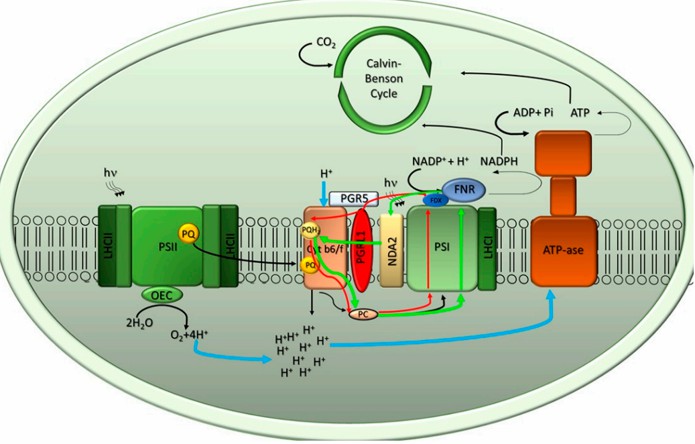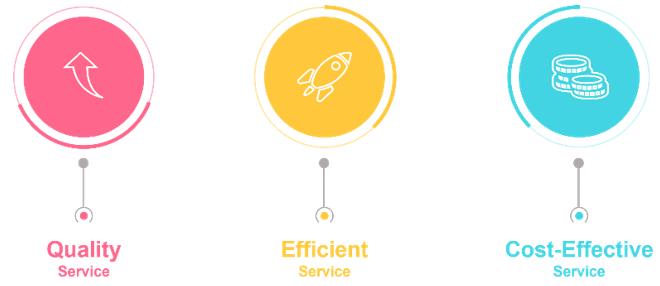Algae-Based Biosensor Development Services for Herbicide Monitoring
To accommodate the increased demand for food, the use of pesticides and especially herbicides has increased in agriculture, which has had a clear impact on the environment and human health. The use of genetically modified algae in biosensors has enabled the identification of different species of herbicides. With many years of experience in genetic engineering and research with algae, Lifeasible offers professional algae-based biosensor development services for herbicides monitoring.
Introduction to Herbicides
Herbicides, also commonly referred to as weed killers, are substances used to control unwanted plants, also known as weeds. Modern herbicides are usually synthetic mimics of natural plant hormones that interfere with the growth of the target plant. Some plants produce their own natural herbicides, such as the genus Juglans (walnut), or the tree of heaven.
Classification and Mechanisms of Herbicides Selective herbicides control specific weed species while leaving the desired crop relatively unharmed, whereas non-selective herbicides, also known as full-scale herbicides, can be used to remove waste soil, industrial and construction sites, railways, and railway embankments because they kill all plant material with which they come into contact.
- ACCase Inhibitors
- Auxin-like Herbicides
- ALS Inhibitors
- Photosystem Inhibitors
- EPSPS Inhibitors
- HPPD Inhibitors
PS II in Algae for Herbicide Monitoring
Biosensors are extremely selective devices whose characteristics are strictly related to the nature of the analyte to be detected. A special class of biosensors for the photosynthetic bio-mediators of algae, such as C. reinhardtii, is used for the detection of different classes of herbicides. The main factor responsible for its photosynthetic activity is photosystem II (PSII), an enzymatic chlorophyll-protein complex that is the true sensing element of PSII-based biosensors. Most herbicides act by displacing plastoquinone from the QB site of the D1 protein, thereby interrupting electron flow and oxygen evolution and directly altering the fluorescent properties of PSII.
 Fig.1 Schematic representation of photosynthetic electron transport. (Vecchi V, et al., 2020, Plants)
Fig.1 Schematic representation of photosynthetic electron transport. (Vecchi V, et al., 2020, Plants)
Our Services
Algae, because of their easy manipulation and sensitive properties, can be used in herbicide biosensors. Lifeasible can offer services for the entire development process of using algae as biosensors for specific herbicides.
Immobilization of Bio-mediators
Physical Methods - Immobilization of algae using various adsorbent materials such as filter paper discs, alumina discs, and glass microfiber filters, or gel inclusion methods such as polysaccharides, agar, agarose, carrageenan, and alginate. Chemical Methods - The fixation method of bovine serum albumin-glutaraldehyde (BSA-GA) mixtures have been used in algae-based biosensors.
Detection Systems
Types of detection systems can be used in algae-based biosensors. The first is electrochemical methods, such as amperometric and potentiometric methods. The second is optical methods, like colorimetric and bioluminescent methods. Fluorescent approaches and mass-sensitive methods, such as the piezoelectrochemical method, are also applied in algae-based biosensors.
Algae Strains and Array of Mutants
Computational, genetic, and bioinformatics studies will be carried out in order to create a series of mutants useful for our objectives. Depending on the position and type of amino acid substitution, the affinity of the D1 protein binding site in the SP II system for different inhibitors may vary considerably. Different mutant strains of algae need to be designed for different types of herbicides.
Why Choose Us
As a well-developed CRO company, Lifeasible has been dedicated to algae-related research for many years. We have provided professional, rapid, and reliable algae-based biosensor development services for herbicide monitoring for many years. Please contact us for more information.

Reference
- Vecchi V, Barera S, Bassi R, Dall’Osto L. Potential and challenges of improving photosynthesis in algae. Plants. 2020 Jan 3;9(1):67.
Our services are for research use only and not for any clinical use.